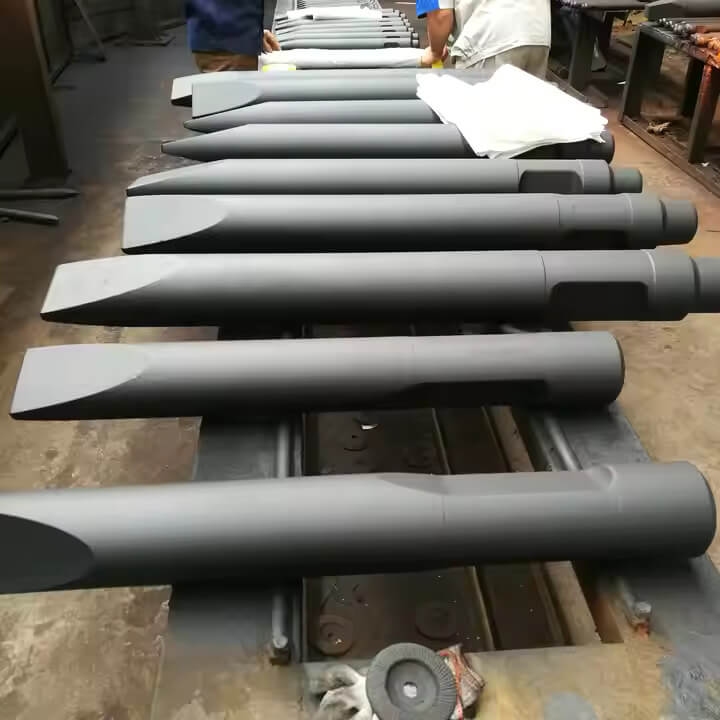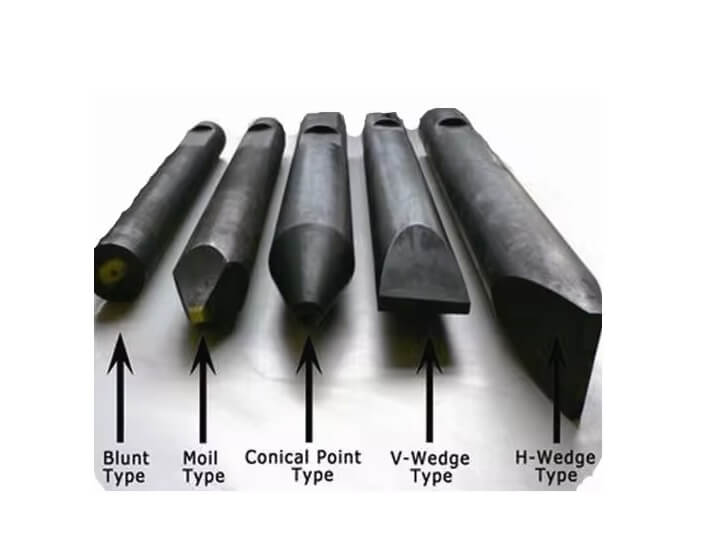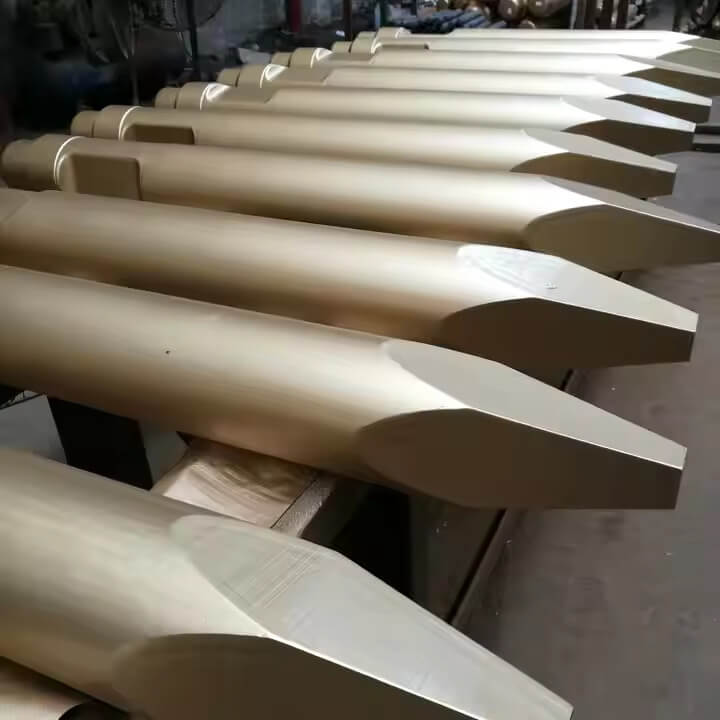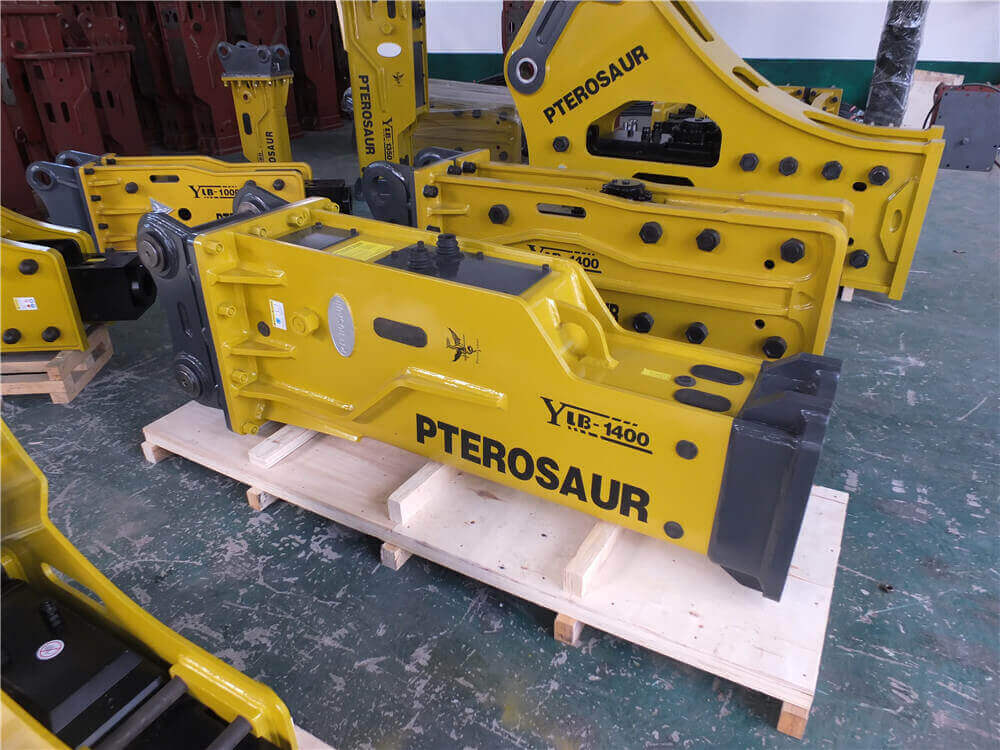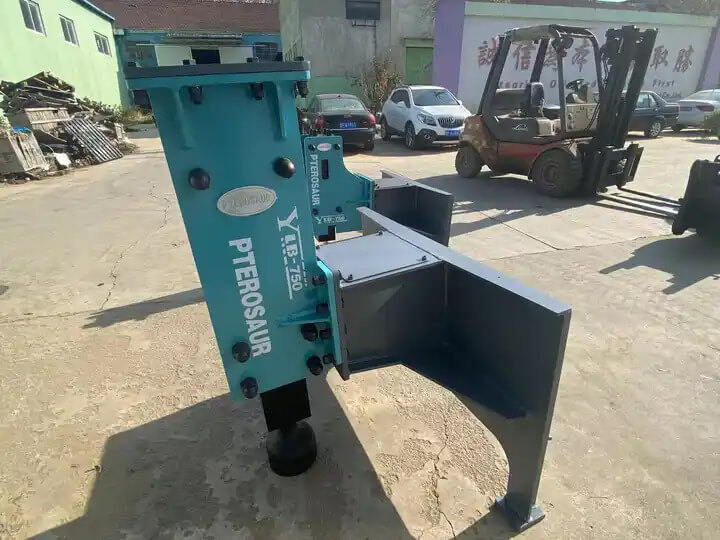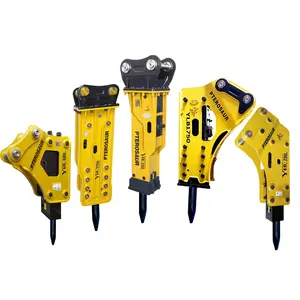Material: 40CrMo, 42CrMo
Chisel Diameter: 45-210 mm
Chisel Types: Moil Point, Blunt Tool, Flat, Wedge
Processing: Advanced Heat Treatment, Anti-Wear
Certification: CE & ISO
Overview
Selecting the correct breaker chisel weight is essential for excavator efficiency, especially for professionals in construction, mining, and demolition. This guide provides detailed insights into specifications, advantages, application contexts, customer feedback, and answers to frequently asked questions, with a focus on how chisel weight affects performance and cost-effectiveness.
Key Specifications for Breaker Chisel Weight
The weight of a breaker chisel is closely related to the tonnage of the excavator, as well as the intended application. Here’s a quick reference to standard weight ranges based on chisel types:
| Chisel Type | Excavator Size (Ton) | Chisel Weight (kg) | Length (mm) | Typical Applications |
|---|---|---|---|---|
| Light Duty | 1-3 tons | 10-50 | 400-600 | Light demolition, soft materials |
| Medium Duty | 4-6 tons | 50-150 | 600-900 | Concrete breaking, moderate demolition |
| Heavy Duty | 7-10 tons | 150-250 | 900-1200 | Quarrying, rock breaking |
| Extreme Duty | 10+ tons | 250+ | 1200+ | Mining, dense rock removal |
Note: These specifications may vary based on manufacturer designs. For exact chisel weights and dimensions, please contact us for detailed recommendations.
Advantages of Selecting the Right Breaker Chisel Weight
- Optimized Force Transfer: Matching chisel weight to the excavator’s hydraulic power ensures efficient energy transfer, maximizing impact without overloading the equipment.
- Extended Equipment Life: The correct weight reduces strain on the excavator arm and hydraulic system, leading to less wear and tear.
- Enhanced Precision and Control: Appropriate chisel weight allows for smoother operation and increased control, especially in delicate demolition and material separation tasks.
- Reduced Operating Costs: Using the ideal weight for specific applications reduces fuel consumption and maintenance frequency, improving cost efficiency.
Application Scenarios for Breaker Chisels by Weight
- Light-Duty Work in Urban Settings
Chisels weighing 10-50 kg are ideal for light excavation tasks, especially in urban projects where precision and low noise are essential. Common applications include breaking concrete slabs, sidewalks, and smaller foundation work. - Medium-Duty Excavation in Construction
Medium-weight chisels (50-150 kg) are suited for general construction projects involving concrete or brick structures. Their weight allows for effective material breaking without risking structural damage to nearby buildings. - Heavy-Duty Quarrying and Mining
Heavy chisels (150-250 kg) provide the necessary force for quarrying and hard rock breaking, making them indispensable for larger construction sites or open-pit mining. - Extreme-Duty for Tough Demolition and Mining
For the toughest applications, chisels over 250 kg offer unparalleled impact force, ideal for extensive mining and breaking dense materials, such as granite or reinforced concrete.
Customer Feedback
Ryan M., Urban Demolition Specialist
“I’ve found that lighter chisels work best for urban demolition projects. The reduced weight allows for more precise control, which is essential when working near existing structures.”
Linda S., Construction Site Manager
“Using the right chisel weight for our 6-ton excavator has made a noticeable difference. We chose a medium-duty chisel for breaking reinforced concrete, and the efficiency has improved while wear on the machine has decreased.”
Alex G., Mining Operations Lead
“For breaking dense rock in a quarry setting, the heavy-duty chisels provide the needed impact without compromising on the tool’s durability. We get faster results and fewer downtimes.”
Frequently Asked Questions (FAQ)
1. How does chisel weight affect excavator performance?
The right chisel weight ensures optimal impact force transfer from the excavator’s hydraulic system to the material. An overly light chisel may not deliver enough power, while an overly heavy one could strain the equipment.
2. How do I choose the correct chisel weight for my excavator?
Consider the tonnage of your excavator and the type of material you’ll be working with. Generally, larger machines require heavier chisels to fully utilize their hydraulic power.
3. Does a heavier chisel always mean better performance?
Not necessarily. A chisel’s effectiveness depends on its compatibility with the excavator and application type. Overloading a lighter excavator with a heavy chisel can lead to damage.
4. Are there lightweight options that still offer high impact?
Yes, certain chisels use advanced materials to provide a strong impact force without excessive weight. These are typically found in medium-duty applications where a balance between force and control is needed.
Conclusion
Selecting the right breaker chisel weight is critical to maximizing excavator efficiency, reducing wear and tear, and achieving optimal project results. Whether working on urban demolition, mining, or general construction, aligning chisel weight with machine tonnage and material hardness enhances both performance and cost-effectiveness. For specific guidance on chisel weight recommendations tailored to your machinery and project needs, please reach out to our support team.

